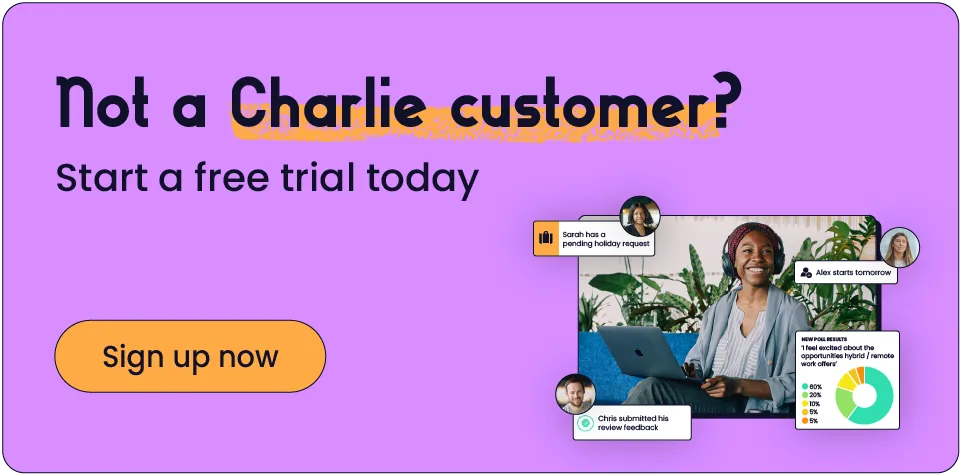7 HR best practices to build high-performing teams in 2024

At Charlie, we know our people are the heart of our success. That's why we're constantly innovating our HR practices to build high-performing teams.
As HR leaders, it's our responsibility to champion a people-centric approach. Here at Charlie, I've seen firsthand the power of these 7 HR Best Practices:
- Adopt a diverse and strategic hiring practice.
- Establish clear company values.
- Be flexible in all your approaches.
- Be present throughout the employee's journey (onboarding - training).
- Implement forward-thinking policies
- Build challenges and give autonomy to boost engagement.
- Make room for transparency.
In this article, I'll share how Charlie uses these HR practices to foster a thriving work environment and empower our teams to do their best.
What are HR best practices?
HR best practices refer to the most effective strategies, policies, and processes for an organisation's HR team to achieve organisational goals and support employee well-being. These practices are often aligned with legal requirements, industry standards, and the organisation's culture and values.
Companies focus on optimising their HR best practices for two major reasons: to create a strong workforce and build a positive work environment.
They both aim to optimise the recruitment, retention, and productivity of employees while promoting a positive workplace.
HR best practices vs. HR activities
It's very easy to confuse HR best practices with HR activities because both involve tasks related to managing human resources within an organisation.
HR activities refer to the specific processes that HR professionals carry out, such as recruitment, training, performance management, and employee relations.
On the other hand, HR best practices include the strategies, policies, and approaches that are considered most effective in managing human capital to achieve organisational goals.
Examples of HR activities:
- Recruitment and selection
- Training and development
- Performance management
- Compensation and benefits administration
- Talent management
- Employee engagement
Example of HR practices:
- Recruitment strategy
- Continuous learning and development
- Performance feedback and recognition
- Transparent communication
- Work-life balance support
- Diversity, equity, and inclusion initiatives
How have HR best practices evolved in 2024?
In 2023, trends shaping the world of work included employee well-being, flexible working arrangements, change management, and DEI initiatives. To stay afloat, organisations had to remain flexible and evolve with the workplace landscape.
Here are the two highlights from the most recent research in HR practices and how best practices have evolved:
- Perks and benefits should be adjusted to meet individual needs. Statistics show that over 40% of workers said their company loyalty would increase if their benefits were customised to meet their individual needs. Tailored benefit packages can help address specific challenges or priorities within the workforce, such as promoting work-life balance, supporting mental health, or accommodating diverse family structures.
- Technologies such as generative AI have brought about a change in the way employees work. When ChatGPT was released, companies saw this as an opportunity to optimise their productivity and improve innovation across all levels. This led to the adoption of AI tools. However, there is still a lot of work that needs to be done in terms of reskilling. To help employees grow in their career path and be less worried about losing their jobs to AI, HR leaders would have to provide workers with extensive reskilling programs.
7 HR best practices to transform your workplace
Below, I’ll give examples of the 7 best HR practices Charlie adopted to make sure we stay in line with employees’ expectations.
1 – Adopt a diverse and strategic hiring practice
To attract talent from diverse backgrounds, you need to diversify your hiring practices. Companies can enhance their 2024 DEI strategies by empowering hiring managers, as 45% of employees believe they are best positioned to increase diversity.
Attracting a diverse workforce would be impossible if companies didn't address discrimination and negative bias in their hiring processes. Inclusive hiring is all about creating a level playing field where all potential candidates, regardless of gender, race, ability, or socio-economic background, are given equal opportunities in the recruitment process.
At Charlie, along with working with DE&I-trained hiring managers, we conduct blind CV reviews and prepare DE&I interview questions, which helps to reduce unconscious bias in the hiring process. Additionally, HR leaders should consider using diverse interview panels when interviewing candidates.
These are just a few examples you can use to revolutionise your hiring practices. This is considered an HR best practice, with statistics showing that diverse teams are 70% more likely to capture new markets.
2 – Establish clear company values
Clear values serve as guiding principles for individuals within a company, shaping behaviours, decisions, and interactions. They're the foundation upon which a strong company culture can be built.
At Charlie, our values include:
- Get uncomfortable
- Give energy
- Drive for results
- Be humble
Right from day one, these values have shaped a foundation for a high-performing and inclusive culture where our employees are empowered to excel, collaborate, and grow both personally and professionally.
Remember that when it comes to shaping your company's values, they remain unique because they are determined by various factors such as the company's mission, vision, history, industry, leadership style, and the collective beliefs and priorities of its employees.
3 – Be flexible in all of your approaches
Flexibility as an HR best practice is all about promoting an environment where employees have the autonomy to manage their time and work arrangements effectively, which directly relates to remote working and flexible hours.
For employers, this means allowing employees to work from locations that suit them best, whether it's from home, a co-working space, or elsewhere.
With 12.7% of full-time employees opting for remote work and 28.2% embracing a hybrid model, it's evident that remote work is becoming a permanent fixture. Despite the benefits it presents to the workplace, HR managers continually struggle with the dual demands of overseeing remote teams and upholding company culture.
When it comes to improving productivity, it's all about implementing an effective strategy to get the best out of your workforce. In this context, you can use HR software like CharlieHR to set working locations for each individual. This will help you understand who is working from where and when, and adjust your policies when needed.
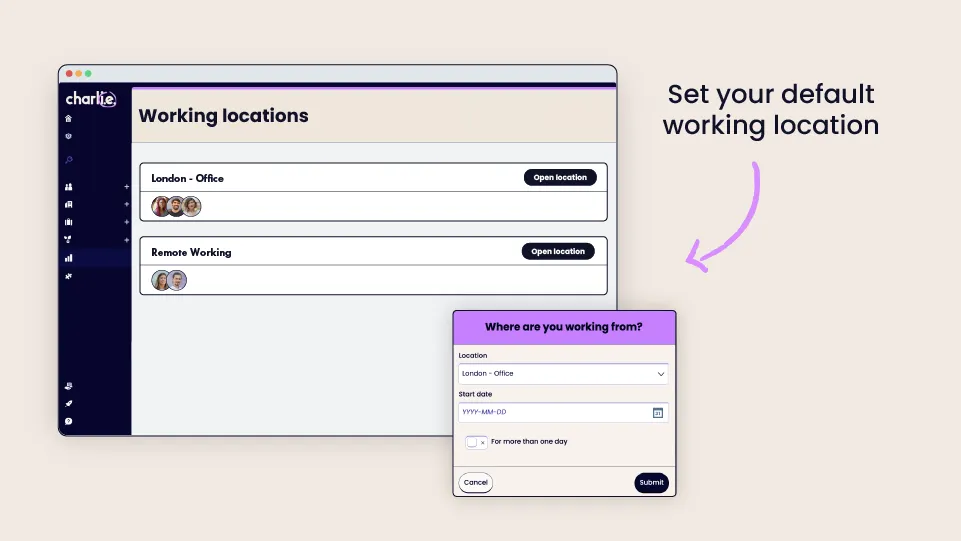
Offering robust sick leave policies is another way to improve flexibility in the workplace. At Charlie, we have implemented a system where each employee is entitled to take their sick leave for 20 days per year at 100% pay.
That’s also where Charlie also gives you an easy way out to simplify the process of tracking and reporting employee sick leaves – get people to record it themselves in the software, review it in one click and get into a deep analysis mode by downloading our reports.
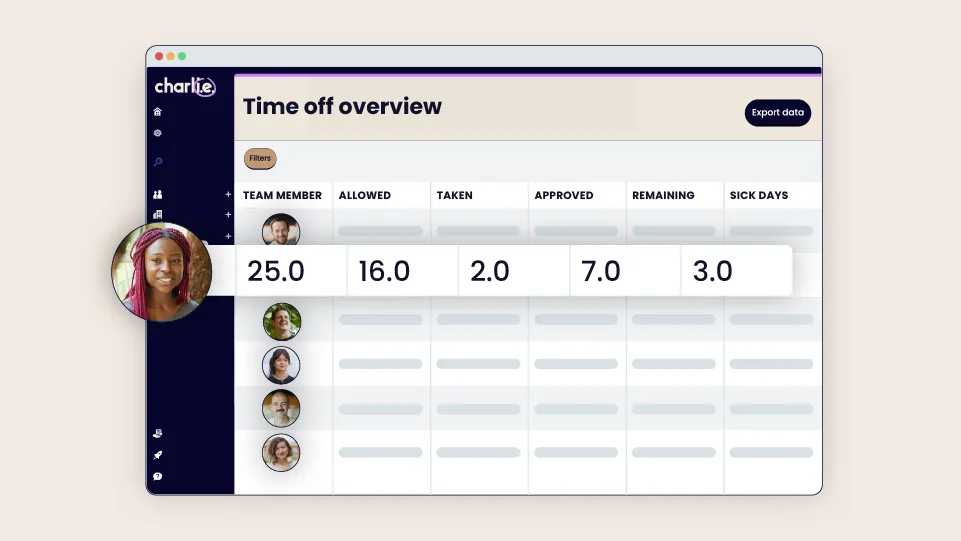
4 – Be present throughout the entire process, from the initial onboarding to ongoing development
A positive onboarding process can make all the difference in ensuring new employees feel welcome and engaged from day one.
Organisations with a strong onboarding process get to experience an increase in retention by 82%. Retention remains one of the biggest struggles of HR leaders and managers, that's why opting for an employee onboarding software is the best investment you can make to keep new hires happy and committed.
Charlie's onboarding technology makes this process seamless for new hires, whether in-person, hybrid, or in a remote setting. This automates the whole process, freeing up your HR team's time to focus on other strategic business-related functions.
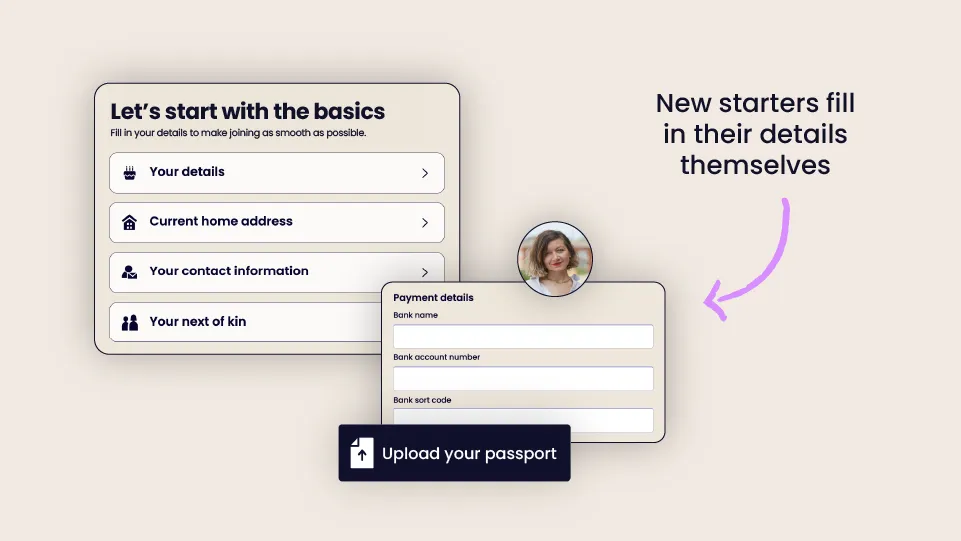
Don't just stop at the onboarding process, you should provide ongoing support to your workers with effective training and development. These are educational activities created to enhance the skills and knowledge of employees, helping them contribute effectively and meaningfully at work.
Conducting regular performance reviews also contributes to the professional development of your employees. Constructive feedback is an essential aspect of the workplace, and everyone appreciates receiving it.
Managers should hold weekly, quarterly annual review meetings with employees, encouraging healthy discussions on career growth, performance, and challenges – with Charlie, you can even automate the process in one simple motion by getting your performance process sorted in no time and even benefit from 360 degree reviews.
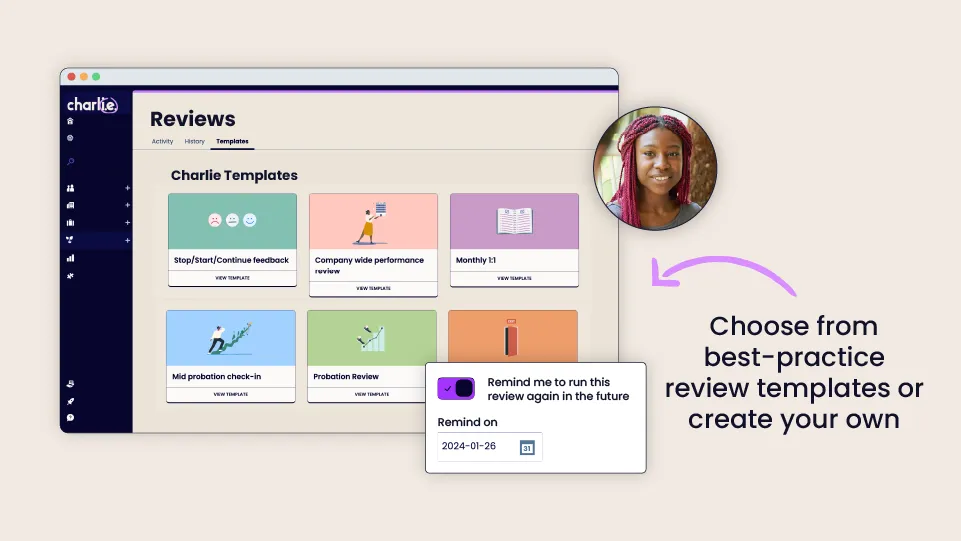
5 – Implement forward-thinking HR policies
As a 2024 HR best practice, you have to redefine your policies to meet ever-changing business needs.
Well-defined HR policies will ensure that the conditions within the company are not only in compliance with relevant laws and regulations, but also that employee satisfaction is high.
HR policies such as the nine day fortnight and implementing a hybrid working model should be a primary focus for employers looking to innovate their work processes.
By implementing forward-thinking policies, you can remain a top employer by attracting the best talent.
Check out our HR policies hub for more information on all the policies you should have for your business.
6 – Build challenges and give your team autonomy to boost engagement
Now, this is very simple: it involves building a strong culture of growth in the workplace. By designing tasks and assignments that stretch each individual and push them outside their comfort zone, you can help them to learn new skills and improve existing ones. Remember that it’s crucial that, during this process, your team isn’t overworked, as burnout can hinder productivity and satisfaction.
Once you have the right people on board, empower them with autonomy. Allow them the freedom to make decisions and explore solutions independently –, it's also essential to offer guidance and support when needed, without micromanaging their every move.
Additionally, equip your managers with the skills to effectively support and lead their teams. These managers should understand the value of providing autonomy and guidance, rather than controlling every aspect of their employees' work.
7 – Make room for transparency
Transparency as a 2024 HR best practice involves building a culture of trust among your workers. Organisations need to open and honest about significant decisions, such as salary changes or restructuring.
Employees appreciate transparency and feel more valued when they understand the reasoning behind decisions that affect them.
Another way managers and HR leaders can implement transparency in the workplace is to communicate openly about the company's challenges as well as its successes.
Do not attempt to conceal or downplay setbacks, instead, regularly provide your employees with updates on the company's performance, market conditions, and any potential risks on the horizon. When organisations are transparent about both successes and challenges, it demonstrates integrity and strengthens trust between leadership and the team.
